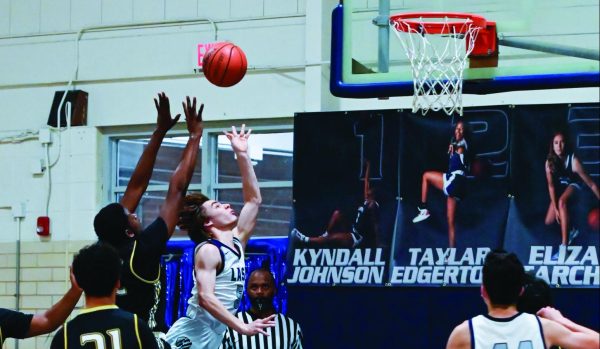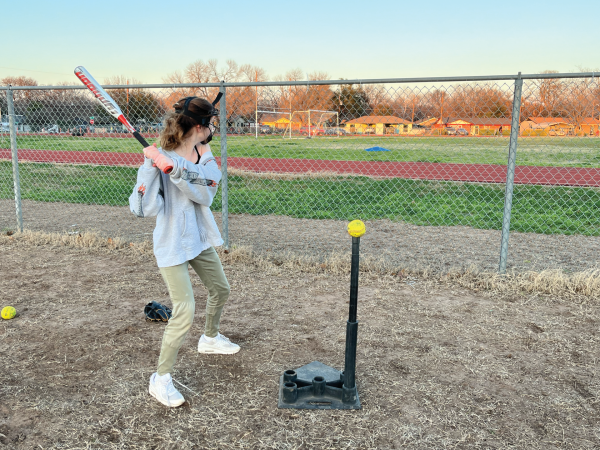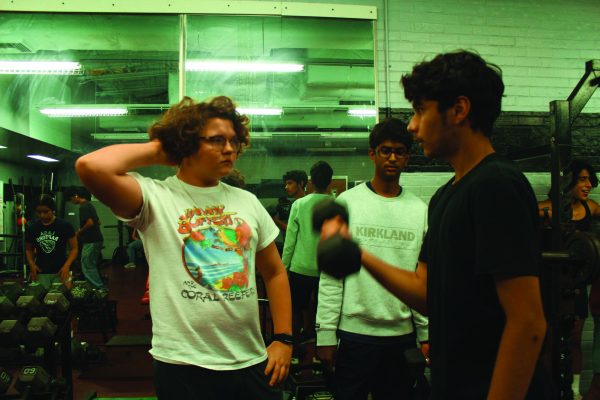Austin’s Turn Around the Track
Formula One Comes to Circuit of the Americas
November 18, 2022
Just southeast of Austin, the roar of engines and the squeal of brakes can be heard from the Circuit of the Americas (COTA) as Formula One makes their annual visit for the United States Grand Prix. Every year people and businesses all over Austin gear up for the influx of Formula One fans, and each year the crowd continues to grow.
The event will take place over the weekend of Oct. 21-23 with practice on Friday, the qualifying session on Saturday, and the race on Sunday. The starting order for Sunday’s race is decided by the fastest one-lap times from the previous day’s 45-minute qualifying session, while also taking into account any penalties for extra car parts the drivers may have accrued over the course of the weekend. In Formula One, it is common for drivers to take an extra part in the middle of the weekend if a car part is worn or broken, which results in a grid penalty, usually five or ten places. The winner of the race earns 25 points, which count towards the Formula One drivers’ championship. The top 10 finishers in the race earn points, and the driver with the most points at the end of the season wins the championship.
The current championship leader is Max Verstappen of the Red Bull team, who won last year’s United States Grand Prix with 25 points and crossed the finish line 2.4 seconds before the driver who placed second. Verstappen and Red Bull have been comfortably leading their respective standings for the majority of the season, so most of the action in the race will be in the midfield. Weekend attendance has increased by 60% in the past three years from 250,000 in 2019 to 400,000, according to the Formula One website, meaning that Austin will have to manage an influx of an unusually high number of fans going to COTA in October.
Jeff Stensland, a senior specialist of public information at the Austin Transportation Department, said Austi works hard every year to prepare for the United States Grand Prix. The department works to ease travel for not only those attending the event but also for residents of Austin that might be affected by changing traffic conditions or crowds.
“Austin Transportation coordinates with promoters of major events, especially when traffic control plans are required to manage crowds and traffic queuing around an event, as well as minimize disruptions for people not attending the event,” Stensland said. “Our department ensures to coordinate with other City departments and the Texas Department of Transportation through the Austin Center for Events, which was created to provide comprehensive major event resource management.”
The Austin Transportation Department also faces logistical challenges within its own operations, such as understaffing. Due to this, the department often changes employee hours to accommodate for the requirements needed to successfully organize a Formula One race, according to Stensland.
“Austin Transportation staffs accordingly to ensure event needs are met,” Stensland said. “That can include our staff shifting work hours to cover our needs in the Office of Special Events, Right of Way Management, or staffing the Mobility Management Center outside normal staffing hours.”
According to Sophomore Astrid Gothard, a Formula One fan, the introduction of two new Grands Prix in the United States– the Miami Grand Prix in 2022 and the Las Vegas Grand Prix in 2023– might draw Formula One fans away from Austin, making Austin and COTA work harder to market the race. Gothard said that the next few years are going to be critical for COTA to prove that it can rise above the competition.
“It’s definitely going to feel a little more high stakes because COTA still needs to be producing good races and a great atmosphere,” Gothard said. “[The circuit will need] a lot of turnout to assert that it’s a good track to have, and so they don’t get rid of it if these other two tracks in the US prove to be better. So there’s a little higher stake in that COTA needs to keep proving that it is a really good circuit.”
The number of American Formula One fans has increased dramatically in recent years according to Formula One, so much so that car racing is now the fastest-growing sport in the United States in terms of fans. This is partly because of the Netflix series “Drive to Survive”, which details the rivalries between drivers and teams throughout the Formula One season and garnered 28 million views within just five days of its release. Gothard said that “Drive to Survive” played a large part in the increase in American Formula One fans, and the rise in popularity will bring more people to Austin for the race.
“It will make Austin need to prove itself by being on its best and flashiest behavior to cater to all these people who are coming in from all different parts of the country and possibly even other countries, especially the drivers and teams who are from all over the world, that this is an amazing city,” Gothard said. “And that we’re proud to be Austin. We’re proud to have this Formula One track that is an important part of the race calendar.”










